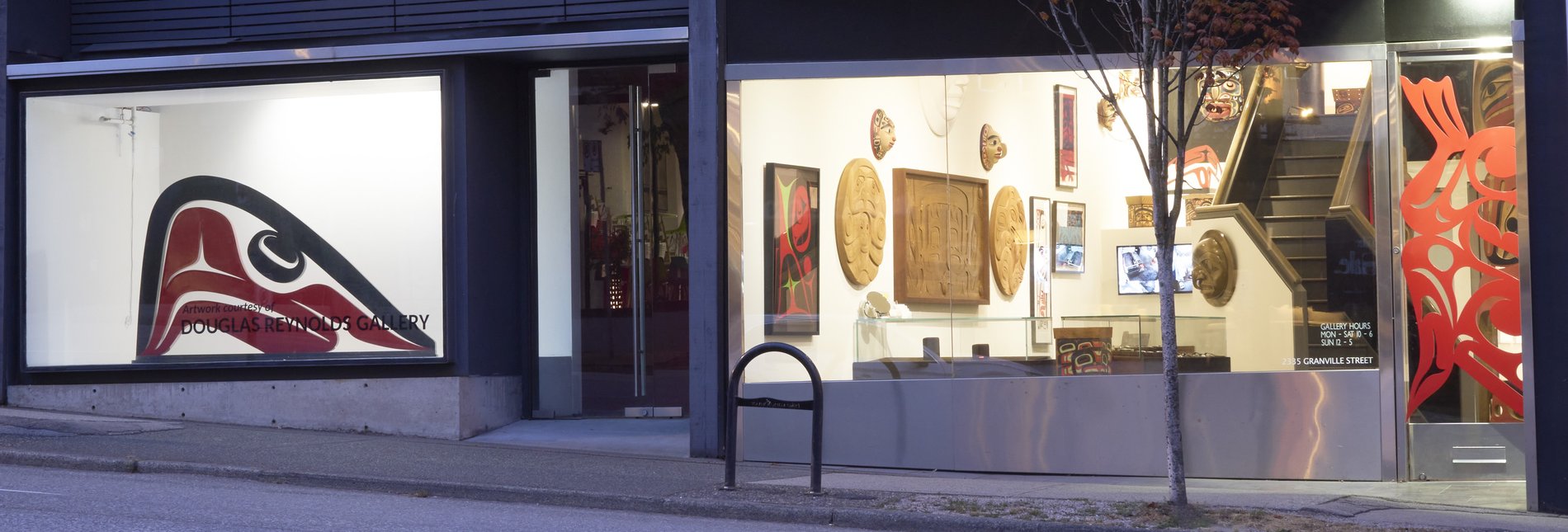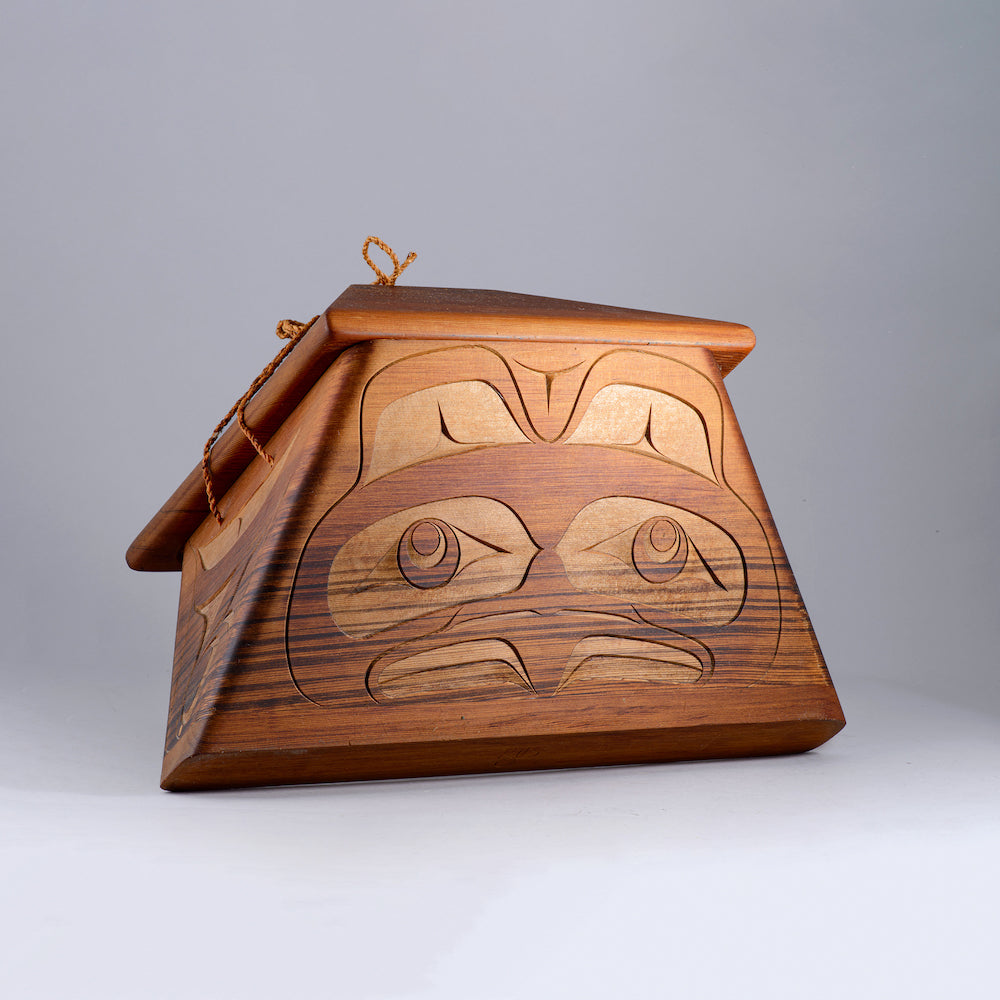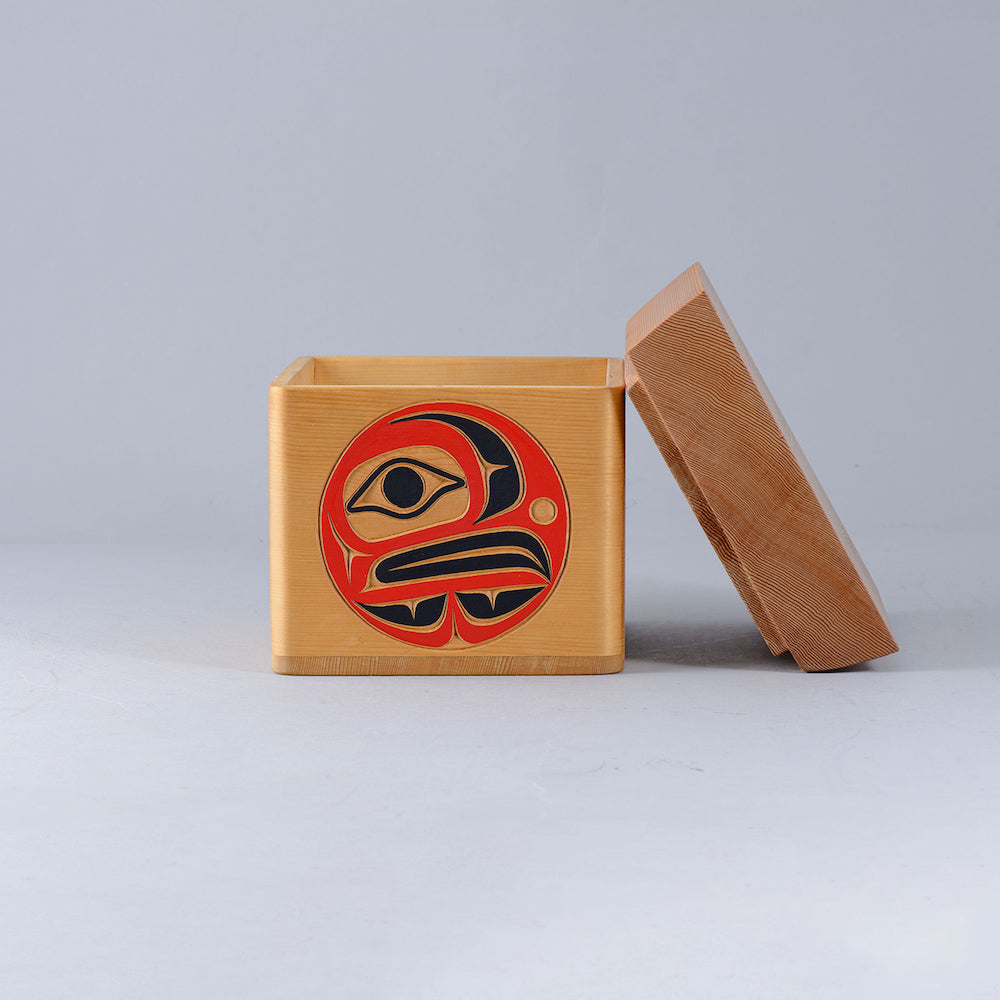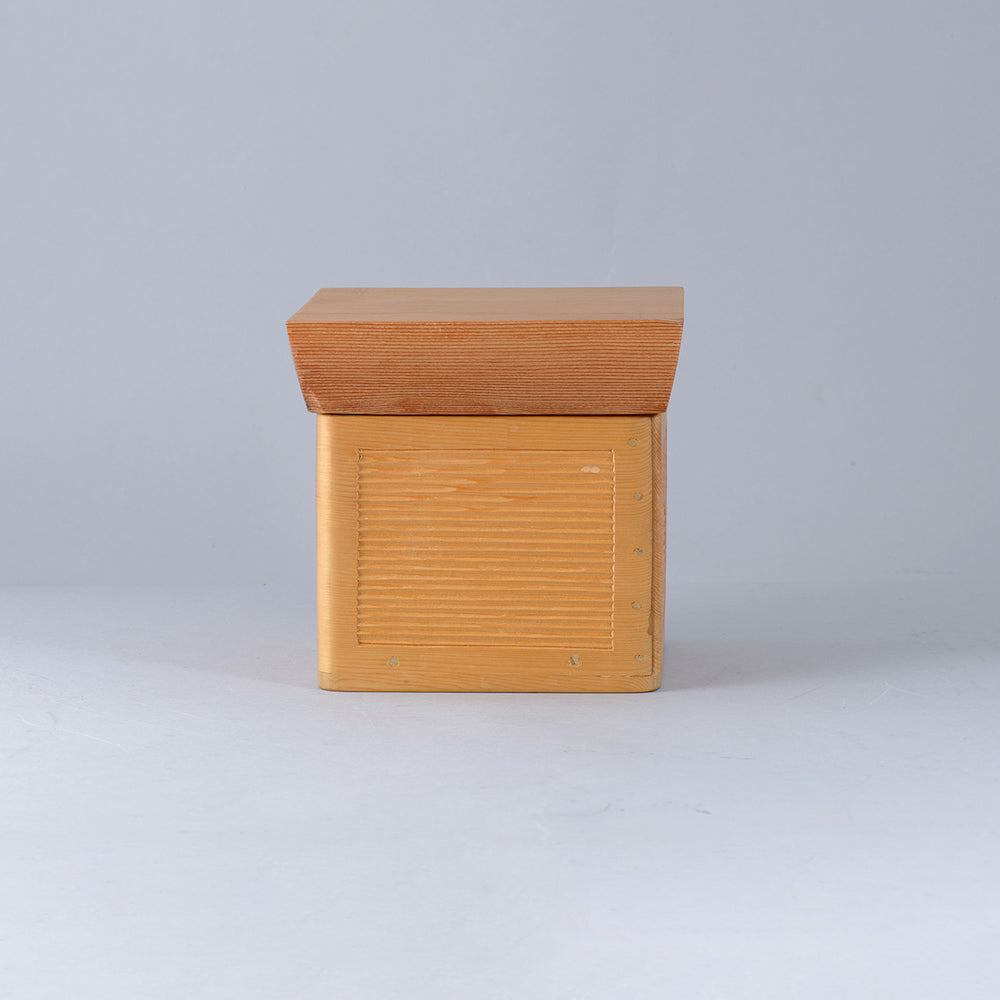It appears that your cart is currently empty

Richard Sumner
Richard Sumner is a member of the Mamalelegala band of Village Island. He took up carving in 1974 at age eighteen, by 1978 he was hired as part of a team to carve the beams and planks for the big house at the U’mista Cultural Centre in Alert Bay. During this project Sumner apprenticed with Doug Cranmer, whom he credits for refining his skills and giving him direction as a carver. Today, he specializes in the production of exquisitely crafted bentwood boxes, although he also carves whistles, bowls, masks, rattles and spoons. Sumner is one of the few artists capable of producing the Tackle Box, a bent-box technique, which is unique to the Northwest Coast.
Throughout his career, Richard Sumner has worked with many Master Carvers: Doug Cranmer, Larry Rosso and Beau Dick. His work has been exhibited as part of the collections of the Vancouver Museum, the University of British Columbia Museum of Anthropology and the Royal British Columbia Museum. Sumner’s works are also represented in many important corporate and private collections around the world. In 1998, Richard Sumner was selected to carve the bent box in which Bill Reid’s ashes were placed for burial.
Eagle Canoe Box
Richard Sumner (Kwakwaka'wakw)
Indigenous artwork on the Pacific Northwest Coast often incorporates figures and animals that are...
Indigenous artwork on the Pacific Northwest Coast often incorporates figures and animals that are related to crest symbols. Crests have been passed down through families and have varying meanings depending on the context and association with a nation, clan, or family. The figures depicted in contemporary Northwest Coast Indigenous artwork also have varying meanings but there are some common characteristics from a range of sources, including oral histories and artist descriptions. Eagle is an ...
$7,000.00
Eagle Box
Richard Sumner (Kwakwaka'wakw)
Indigenous artwork on the Pacific Northwest Coast often incorporates figures and animals that are...
Indigenous artwork on the Pacific Northwest Coast often incorporates figures and animals that are related to crest symbols. Crests have been passed down through families and have varying meanings depending on the context and association with a nation, clan, or family. The figures depicted in contemporary Northwest Coast Indigenous artwork also have varying meanings but there are some common characteristics from a range of sources, including oral histories and artist descriptions. Eagle is an ...
$1,800.00
1 – 2 product(s) of 2




